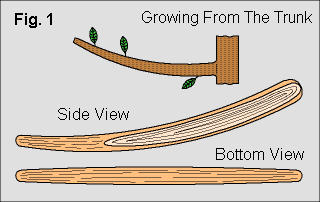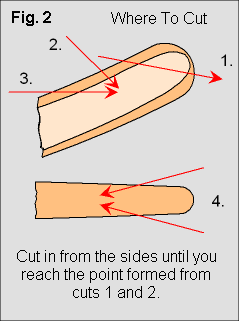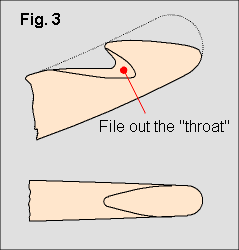I have not gotten their permission for this yet, but am trying to do so. The original page is here. The Speerschleuder  A speerschleuder serves as an extension of the throwing arm, increasing power and distance. Wood is the most suitable material for it, if you want to replicate prehistoric models. A rusty nail crosswise through a roofing slat is not a safe solution. | |
For speerschleuders with a simple carved hook, I prefer a naturally curved branch. The thicker end should be the hook end, with the thinner end for the handle. The reason for this is simple. In order to carve out the hook, a lot of wood must be removed from the branch. Doing this to the thinner end would make the cross section too weak. |
 |
 |
Rough-cutting the the hook only takes a few cuts (Figure 2). Afterwards, you can use a knife to round and taper the end. With a round file, smooth out the notch under the hook (Figure 3) and finish shaping and smoothing the hook with emery paper. |
 |
Wrist strap: this speerschleuder is made without a wrist strap. If you have a problem with it flying out of your hand when you throw, at least the speere goes flying first (...and perhaps this is how the Aborigines invented the boomerang? ; -) ). If the speerschleuder is fastened to your wrist, it may strike you in the kneecap (or even worse) if you accidently let go while you throw.  | ||